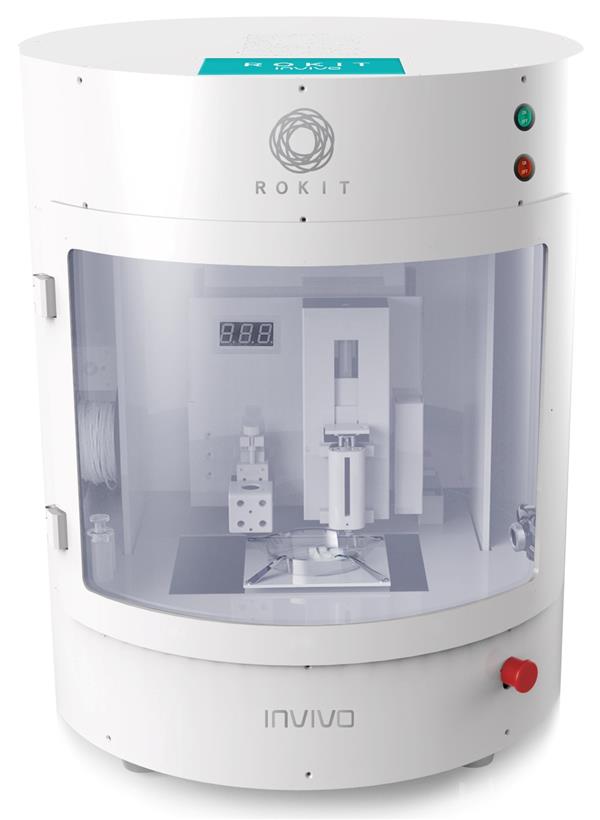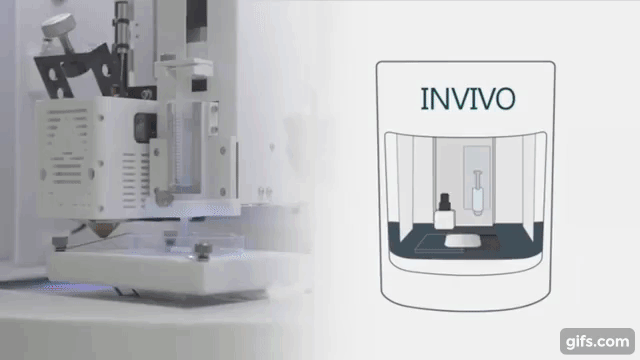ROKIT Healthcare, a Korean 3D bioprinter manufacturer previously known as ROKIT, has introduced a novel 3D bioprinting method to treat scarred lesions.
Using the company’s 3D bioprinter, the ROKIT INVIVO, to 3D print a patient’s autologous tissues and cells into a dermal patch graft. When placed on a wound, the 3D printed dermal patch graft enables the natural formation of new blood vessels (known as neovascularization) for effective regeneration of the skin.
“It is a novel way of overcoming some of the most pronounced limitations associated with traditional stem cell therapy,” said Seok-Hwan You, Chief Executive Officer of ROKIT Healthcare.
“Utilizing 3D bioprinting techniques allows for effective delivery of autologous cells unto the wound site, minimizing cell loss and greatly enhancing cell viability and proliferation.”

3D bioprinting to heal wounds
According to You, “The current practice of directly injecting expanded or cultured stem cells using syringes severely limits cell viability and accurate, uniformly distributed delivery of effective stem cells unto the disease area.”
This hinders treatments for skin scarring, one of the most common medical conditions following dermal injuries, the company states. Such scars can cause significant physical, aesthetic, psychological and social issues, resulting in elective surgical procedures.
To address these limitations, ROKIT Healthcare has been working since 2012 in regenerative medicine to develop additive manufacturing solutions for personalized and improved patient care. ROKIT’s method leverages 3D bioprinting technology as it allows for uniform and equal-density distribution of patient’s autologous tissue and cells.
This leads to rapid migration of keratinocytes – cells designed to form tight junctions with the nerves of the skin – which enables neovascularization at the site of a wound. The company plans to evaluate the effectiveness of this treatment in clinical studies to expand its application to other dermatological conditions including burns and ulcers.

3D bioprinting and regenerative medicine
ROKIT Healthcare’s research into in-situ bioprinting for skin regeneration prompted the release of the Edison Invivo 3D Bioprinter in 2016. This was made possible from a $3 million grant from the Korean Government’s Ministry of Strategy & Finance.
Similarly, skin regeneration and 3D bioprinting have also been used by researchers from Shanghai Jiao Tong University, the National Tissue Engineering Research Center of China, the Chinese Academy of Medical Science, Wei Fang Medical College and Dalian University, in China to constructed ears for children suffering from microtia.
Don’t forget to nominate ROKIT Healthcare and others for the upcoming 2019 3D Printing Industry Awards.
For further awards updates and ideas for who to nominate this year, subscribe to the 3D Printing Industry newsletter, follow us on Facebook and like us on Twitter.
Seeking 3D Printing Jobs? Join and advertise on our dedicated site now to reach professionals in this industry.
Featured image shows patient cells inside the ROKIT INVIVO’s syringe. Clip via ROKIT Healthcare.


